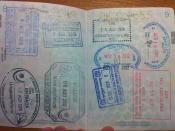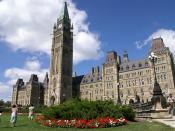BANK OF CANADA
A central bank is the principle monetary authority of a nation. The key role of the Bank of Canada is to conduct the country's monetary policy, which means managing the flow of money and credit in the economy in order to preserve the trust in the value of money.
As a central bank the Bank of Canada oversees many issues concerning the economic and financial well being of Canadians. The Bank of Canada's direct customers are the federal government, the chartered banks, other financial institutions, and other central banks in foreign nations. However, the Bank of Canada is accountable to all Canadians.
To begin with, the history of the Bank of Canada will be discussed, mentioning how and why it was founded. The objectives of the Bank of Canada and its functions will also be explained. Moreover, the individuals who manage the Bank of Canada and implement policies will be discussed.
Finally, the Bank of Canada's role in the monetary policy will be examined.
THE HISTORY OF THE BANK OF CANADA
Before the 1930's, the Canadian financial system operated through a network of private banks and within this network a system for clearing cheques was developed. During this time, it was the larger commercial banks that dealt with the government's business.
With the start of the Depression, Canada was in need of a direct means for the country to settle international accounts. In 1933, R.B. Bennet, head of the Conservative party and Prime Minister at the time, set up a Royal Commission to investigate the banking and monetary system and to consider the idea of creating a Canadian central bank. Lord MacMillian, chairman of the Royal Commission, recommended that the central bank be established, even though it was opposed by the chartered banks. This opposition from the...


